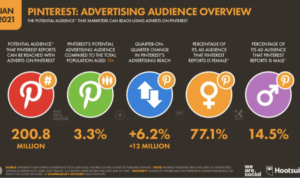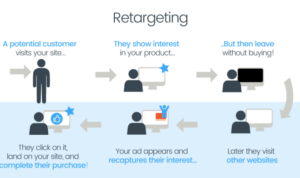Online Advertising Tips sets the stage for this enthralling narrative, offering readers a glimpse into a story that is rich in detail with american high school hip style and brimming with originality from the outset.
In today’s digital age, online advertising plays a pivotal role in the success of businesses. From boosting brand visibility to driving sales, the strategies and tips in this guide will help you navigate the world of digital marketing with style and finesse.
Importance of Online Advertising

Online advertising plays a crucial role in helping businesses reach their target audience and drive sales in today’s digital world. With the increasing reliance on the internet for information and shopping, businesses cannot afford to ignore the power of online advertising.
Examples of Successful Online Advertising Campaigns
- Google AdWords: Google’s pay-per-click advertising platform has helped countless businesses increase their online visibility and drive traffic to their websites.
- Apple’s “Shot on iPhone” Campaign: Apple’s user-generated content campaign showcased the quality of iPhone cameras, leading to increased brand engagement and sales.
- Old Spice’s “The Man Your Man Could Smell Like” Campaign: This humorous and viral campaign helped Old Spice rebrand itself and reach a younger audience, resulting in a significant sales boost.
Impact of Online Advertising on Brand Visibility and Sales
Online advertising allows businesses to target specific demographics and track the performance of their campaigns in real-time. This level of precision and analytics helps businesses optimize their advertising strategies to improve brand visibility and increase sales. Additionally, online advertising offers a cost-effective way to reach a global audience and compete with larger companies in the market.
Types of Online Advertising: Online Advertising Tips
Online advertising comes in various forms, each with its own set of advantages and disadvantages. Let’s explore some of the most common types below:
Display Ads
Display ads are visual advertisements displayed on websites and can come in various formats such as banners, images, videos, or interactive media. They are great for increasing brand awareness and reaching a wide audience. However, they can be seen as intrusive and may be ignored by users who are used to ad blockers.
Social Media Ads
Social media ads are paid advertisements that appear on social media platforms like Facebook, Instagram, Twitter, and LinkedIn. These ads can be highly targeted based on demographics, interests, and behaviors of users. They are effective in reaching a specific audience but can be costly depending on the platform and targeting options.
PPC (Pay-Per-Click) Advertising, Online Advertising Tips
PPC advertising involves advertisers paying a fee each time their ad is clicked. This model is commonly used in search engine advertising, such as Google Ads. It allows for precise targeting and immediate results, but costs can add up quickly, especially in competitive industries.
Native Advertising
Native advertising blends in with the content of the platform it appears on, making it less disruptive to the user experience. It is often seen as more trustworthy and can drive higher engagement. However, there may be concerns about transparency and disclosure of sponsored content.
Video Ads
Video ads are promotional videos that appear before, during, or after online content. They can be highly engaging and memorable, making them effective for storytelling and showcasing products or services. On the downside, creating high-quality video ads can be expensive and time-consuming.
Email Marketing
Email marketing involves sending promotional messages to a targeted list of email subscribers. It is a cost-effective way to nurture leads and drive conversions. However, email marketing campaigns can be perceived as spam if not done correctly, leading to high unsubscribe rates.
Influencer Marketing
Influencer marketing involves partnering with social media influencers to promote products or services to their followers. This type of advertising can be powerful in building credibility and reaching niche audiences. Nevertheless, it can be challenging to find the right influencers and measure ROI effectively.
Remarketing Ads
Remarketing ads target users who have previously visited a website or interacted with a brand but did not convert. These ads follow users across the web, reminding them of products they viewed. While remarketing can lead to higher conversion rates, it may also be seen as intrusive or creepy by some users.
Target Audience and Online Advertising

In the world of online advertising, defining and understanding your target audience is crucial for the success of your campaigns. By knowing who you are trying to reach, you can tailor your ads to appeal directly to them, leading to higher engagement and conversions.
Importance of Defining a Target Audience
Identifying a target audience allows you to focus your advertising efforts on the people most likely to be interested in your products or services. This not only maximizes the impact of your ads but also helps you allocate your budget more effectively.
- Conduct market research to understand the demographics, interests, and behaviors of your target audience.
- Utilize tools like Google Analytics and social media insights to gather data on your website visitors and social media followers.
- Create buyer personas to represent different segments of your target audience, helping you tailor your messaging and targeting.
Tailoring your ads to a specific target audience can significantly improve engagement and conversion rates.
Strategies for Reaching a Target Audience Online
Reaching your target audience online requires a strategic approach that leverages various digital channels and targeting options.
- Use social media advertising to reach specific demographics based on interests, behaviors, and location.
- Implement search engine marketing (SEM) to target users actively searching for products or services related to your business.
- Utilize display advertising to reach a broader audience while still targeting specific demographics or interests.
Tailored Ads for Improved Engagement
Tailored ads that speak directly to the needs and interests of your target audience are more likely to capture their attention and drive action.
- Personalize ad copy and visuals to resonate with different segments of your target audience.
- Utilize dynamic ads that automatically adjust based on the user’s behavior or interactions with your website.
- A/B test different ad creatives and messaging to identify what resonates best with your target audience.
Creating Compelling Ad Content
In the world of online advertising, creating compelling ad content is crucial to capturing the attention of your target audience and driving engagement. From eye-catching visuals to persuasive copywriting, every element plays a key role in the success of your online ads. Let’s dive into some tips for creating engaging and effective ad content.
The Role of Visuals in Online Ads
Visuals are the first thing that catches the eye of your audience, so it’s essential to choose high-quality images or graphics that are relevant to your message. Here are some best practices for using visuals in online ads:
- Use bright colors and bold fonts to grab attention
- Include images that resonate with your target audience
- Avoid clutter and keep your visuals simple and easy to understand
The Importance of Copywriting
Compelling copy is what drives action in online ads. Your copy should be concise, persuasive, and tailored to your target audience. Here are some tips for effective copywriting:
- Highlight the benefits of your product or service
- Use strong calls-to-action to encourage clicks
- Test different messaging to see what resonates with your audience
Optimizing Ad Content for Different Platforms
Each online platform has its own unique features and audience demographics, so it’s important to optimize your ad content accordingly. Here are some best practices for tailoring your ad content to different platforms:
- Consider the format and size requirements of each platform
- Adjust your messaging to fit the tone of the platform
- Monitor performance metrics and make adjustments as needed
Budgeting and ROI in Online Advertising
Setting a budget for online advertising campaigns is crucial for maximizing ROI. By determining how much you can afford to spend and allocating funds strategically, you can ensure that your advertising efforts are cost-effective and yield positive results.
Setting a Budget
- Start by defining your advertising goals and objectives. Determine what you want to achieve with your online advertising campaign, whether it’s increasing brand awareness, driving website traffic, or generating leads.
- Consider your target audience and the platforms they frequent. Allocate more budget to channels where your audience is most active to maximize reach and engagement.
- Research industry benchmarks and competitive analysis to understand how much to invest in online advertising relative to your competitors.
- Monitor and track the performance of your campaigns regularly. Adjust your budget allocation based on the results to optimize spending and improve ROI.
Measuring ROI
- Calculate the ROI of your online advertising efforts by comparing the revenue generated from the campaign to the total cost of advertising. Use the formula: ROI = (Revenue – Cost) / Cost * 100%.
- Track key performance indicators (KPIs) such as click-through rate (CTR), conversion rate, cost per acquisition (CPA), and return on ad spend (ROAS) to gauge the effectiveness of your campaigns.
- Utilize tools like Google Analytics, social media analytics, and advertising platforms’ reporting features to measure and analyze the impact of your online advertising on business outcomes.
Maximizing ROI
- Optimize ad targeting and segmentation to reach the most relevant audience for your products or services. Use demographic, behavioral, and interest-based targeting to increase conversion rates and ROI.
- A/B test different ad creatives, messaging, and call-to-action buttons to identify the most effective combinations that drive engagement and conversions. Continuously refine and iterate on your ad content to improve performance.
- Implement retargeting campaigns to re-engage with users who have previously visited your website or interacted with your ads. Leverage personalized messaging to increase conversions and ROI.





